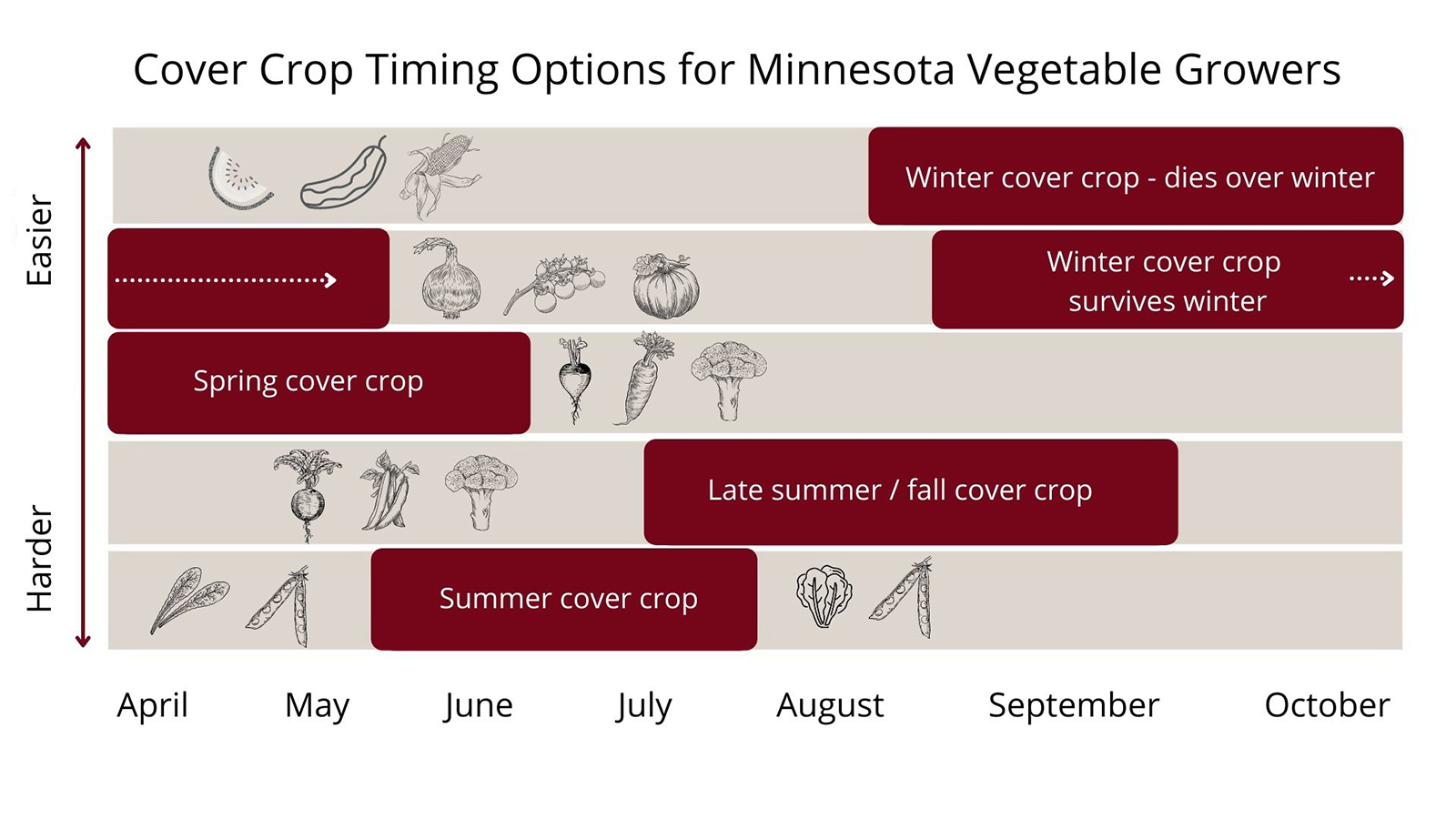One of the most common reasons for not using cover crops is that as the growing season progresses and people become busy, planting cover crops end up at the end of the to-do list each week. By scheduling cover crops into your rotation early in the season and treating them like any other crop, it's easier to make time for it in the summer.

Select cover crops best suited to your open planting windows
Some growers with tight rotations may only have time for a late fall cover crop each year. Others may have periods during the summer where building soil organic matter or nitrogen in the soil is more important than producing a crop in a given field, so pairing a cover crop for half the season with a spring or fall vegetable is ideal.
There is no one-crop-fits-all cover crop. Some cover crops thrive in the cooler temperatures of spring and late fall, whereas others do best in the middle of the summer. Our cover crop selection page for vegetable growers walks through the various cover crop options for different planting windows, with pros and cons of each species. Check it out here.
Select cover crops to meet your goals
Some cover crops fix nitrogen, others provide food for pollinators, while some are excellent at preventing erosion. Unfortunately, no cover crop does it all. Mixing species can achieve multiple benefits, but vegetable growers should be wary of pre-made mixes. The multi species mixes available through seed companies are typically grown with commodity crop growers in mind, and they often include plants in the Brassica family or other common vegetable crop families. Especially for growers who have had disease issues in their Brassica crops, it's important to avoid plants from this family in your cover crop mix, since a Brassica cover crop breaks up your crop rotations. In general, sticking to a legume+ non-legume mixture (e.g. oats and peas, rye and vetch, sudangrass and cowpeas) gives you the benefits of nitrogen fixation from the legume, plus the benefits of biomass and weed suppression that grasses tend to provide. Our cover crop selection page highlights the pros and cons of various species to help you decide which species or species mix will best meet your goals.
Author: Natalie Hoidal, UMN Extension Educator, Local Foods and Vegetable Crops

Comments
Post a Comment